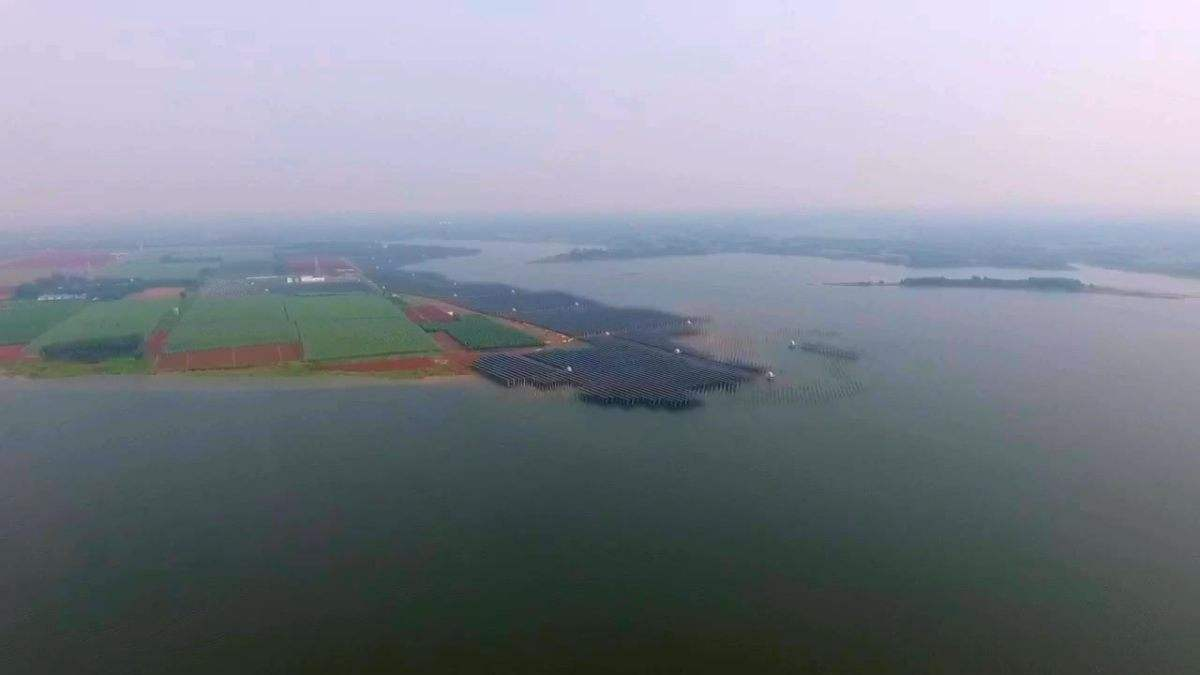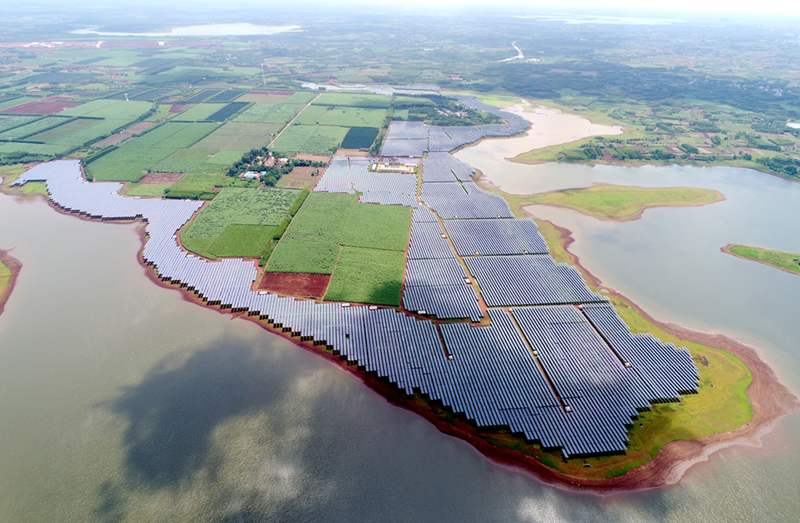Big Solar Power Plant
Reservoir Photovoltaic Power Plant
Guangdong Xuwen town Liyutan Reservoir Photovoltaic Power Plant, Phase I 20MW, Phase II 30MW (2019 in Guangdong)
Phase I, 20MW

Phase II, 30MW

A reservoir photovoltaic (PV) power plant, also known as a floating solar farm or floating solar power plant, is a type of solar energy installation that is built on water bodies such as reservoirs, lakes, or ponds. Here's an overview of how a reservoir PV power plant works:
1. Floating Solar Panels:
Instead of being installed on the ground or rooftops, solar panels are mounted on specially designed floating structures placed on the water surface. These structures are typically made of buoyant materials like high-density polyethylene (HDPE) or other lightweight materials.
2. Anchoring System:
The floating structures are anchored to the bottom of the reservoir using mooring systems or fixed anchoring systems, ensuring stability and preventing drifting.
3. Solar Panel Design:
The solar panels used in floating PV power plants are similar to those used in traditional ground-mounted or rooftop installations. These panels consist of photovoltaic cells that convert sunlight into electricity.
4. Electrical Components:
Like any solar system, a reservoir PV power plant includes electrical components such as inverters, transformers, and distribution equipment. These components convert the DC power generated by the solar panels into AC power suitable for transmission and use.
5. Grid Connection:
The power generated by the floating solar panels can be connected to the local electrical grid to supply electricity to nearby communities or other consumers. This connection is typically done through underwater or underground cables.
Advantages of Reservoir PV Power Plants:
l Efficient Land Use: Utilizing water bodies for solar panel installation maximizes land use efficiency, especially in areas where available land is limited.
l Increased Energy Output: The cooling effect of water helps maintain lower operating temperatures for the solar panels, resulting in increased energy production compared to ground-mounted installations.
l Reduced Water Evaporation: The floating solar panels provide shade, reducing water evaporation from the reservoir. This benefit is particularly significant in arid or drought-prone regions.
l Environmental Benefits: Reservoir PV power plants have minimal land-use impact and can help offset greenhouse gas emissions, contributing to a cleaner energy mix.
l Water Conservation: By covering a portion of the reservoir's surface, floating solar panels reduce water exposure to sunlight, which can help limit algae growth and preserve water quality.
Challenges and Considerations:
l Site Assessment: Detailed analysis of the water body's depth, size, location, and environmental conditions is crucial to ensure the feasibility and stability of the floating solar installation.
l Compatibility with Existing Infrastructure: The project must consider any existing infrastructure in the reservoir, such as navigation routes, fishing activities, or irrigation systems, to minimize conflicts.
l Maintenance Access: A proper maintenance plan should be developed to allow access to the floating solar panels for cleaning, repairs, and routine inspections.
Reservoir photovoltaic power plants are gaining popularity worldwide due to their unique advantages and ability to combine renewable energy generation with water resource management.
